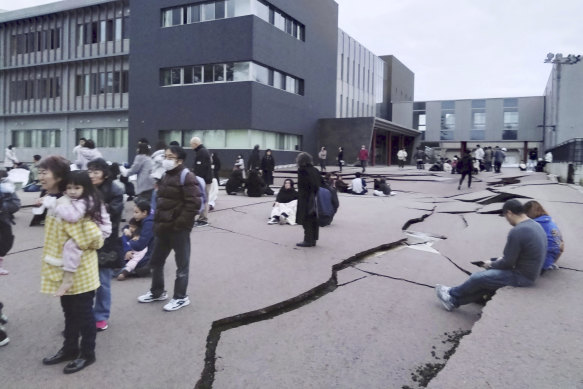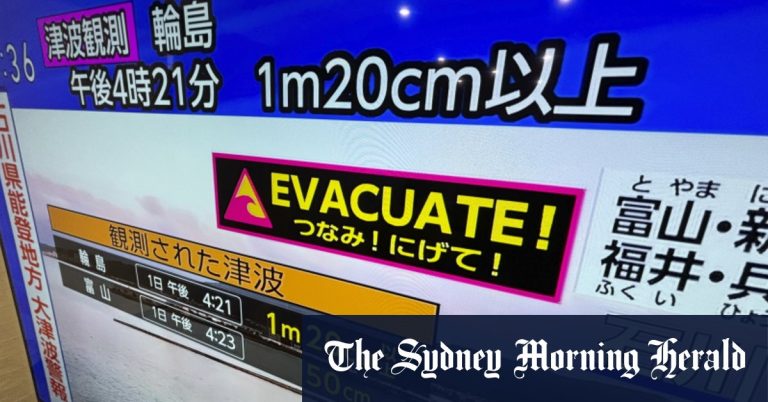Footage broadcast by Japanese Broadcasting Corporation (NHK) showed a building collapsing in a column of dust in the coastal city of Suzu and residents of the city of Kanazawa hiding under tables as tremors shook their homes. The earthquake also shook buildings in the capital, Tokyo, on the opposite coast.
Hokuriku Electric Power Company said more than 36,000 homes were without power in Ishikawa and Toyama prefectures.

Cracks in the ground in Wajima, Ishikawa Prefecture, on Monday.credit: Kyodo News
High-speed rail services to Ishikawa were suspended, while telecommunications companies SoftBank and KDDI reported outages in phone and internet services in Ishikawa and Niigata, according to their websites.
Japanese carrier ANA returned four planes bound for Toyama and Ishikawa airports in the wake of the quake, while Japan Airlines canceled most of its services to the Niigata and Ishikawa prefectures for the rest of the day, according to TV Asahi.
download
Japan's Nuclear Regulatory Authority said no violations had been confirmed at nuclear power plants along the Sea of Japan, including five active reactors at Kansai Electric Power's Ohi and Takahama plants in Fukui Prefecture.
The agency said that Hokuriku Corporation's Shika station in Ishikawa, which was located closest to the epicenter, had already shut down its reactors before the quake for regular inspection and did not experience any impact from the quake.
A massive earthquake and tsunami struck northeastern Japan on March 11, 2011, killing nearly 20,000 people, destroying towns and causing nuclear meltdowns in Fukushima.
Another earthquake, known as the Great Hanshin Earthquake, struck western Japan in 1995, killing more than 6,000 people, most of them in the city of Kobe.

